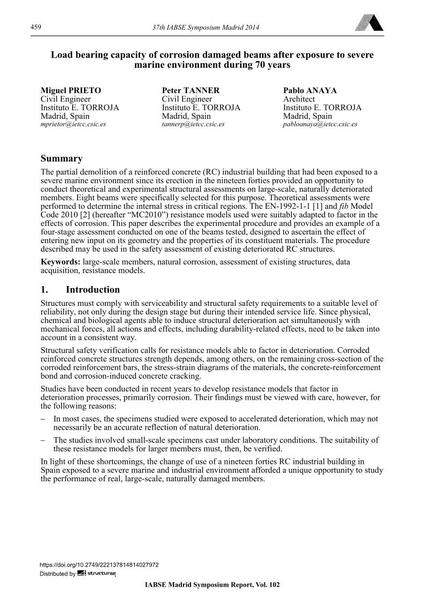Load bearing capacity of corrosion damaged beams after exposure to severe marine environment during 70 years

|
|
|||||||||||
Bibliographic Details
| Author(s): |
Miguel Prieto
Peter Tanner Pablo Anaya |
||||
|---|---|---|---|---|---|
| Medium: | conference paper | ||||
| Language(s): | English | ||||
| Conference: | IABSE Symposium: Engineering for Progress, Nature and People, Madrid, Spain, 3-5 September 2014 | ||||
| Published in: | IABSE Symposium Madrid 2014 | ||||
|
|||||
| Page(s): | 459-466 | ||||
| Total no. of pages: | 8 | ||||
| Year: | 2014 | ||||
| DOI: | 10.2749/222137814814027972 | ||||
| Abstract: |
The partial demolition of a reinforced concrete (RC) industrial building that had been exposed to a severe marine environment since its erection in the nineteen forties provided an opportunity to conduct theoretical and experimental structural assessments on large-scale, naturally deteriorated members. Eight beams were specifically selected for this purpose. Theoretical assessments were performed to determine the internal stress in critical regions. The EN-1992-1-1 [1] andfibModel Code 2010 [2] (hereafter “MC2010”) resistance models used were suitably adapted to factor in the effects of corrosion. This paper describes the experimental procedure and provides an example of a four-stage assessment conducted on one of the beams tested, designed to ascertain the effect of entering new input on its geometry and the properties of its constituent materials. The procedure described may be used in the safety assessment of existing deteriorated RC structures. |
||||
| Keywords: |
data acquisition assessment of existing structures large-scale members natural corrosion resistance models
|
||||
